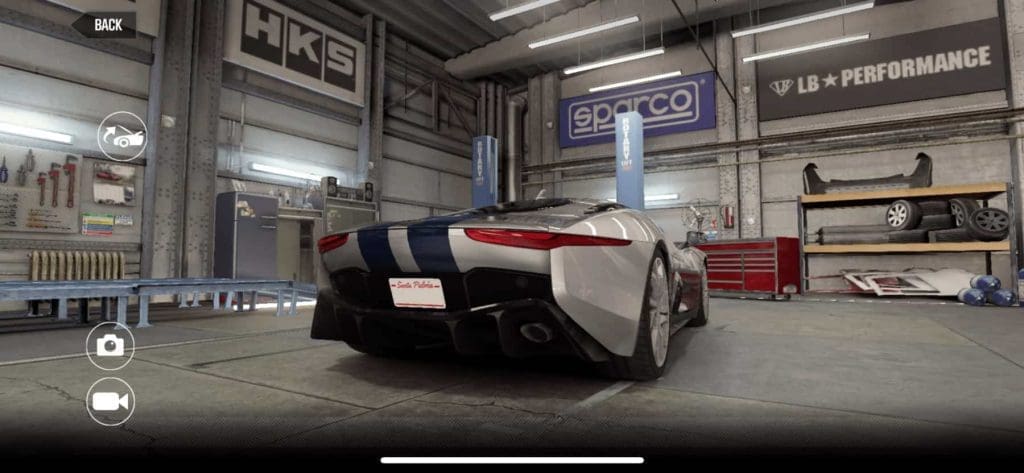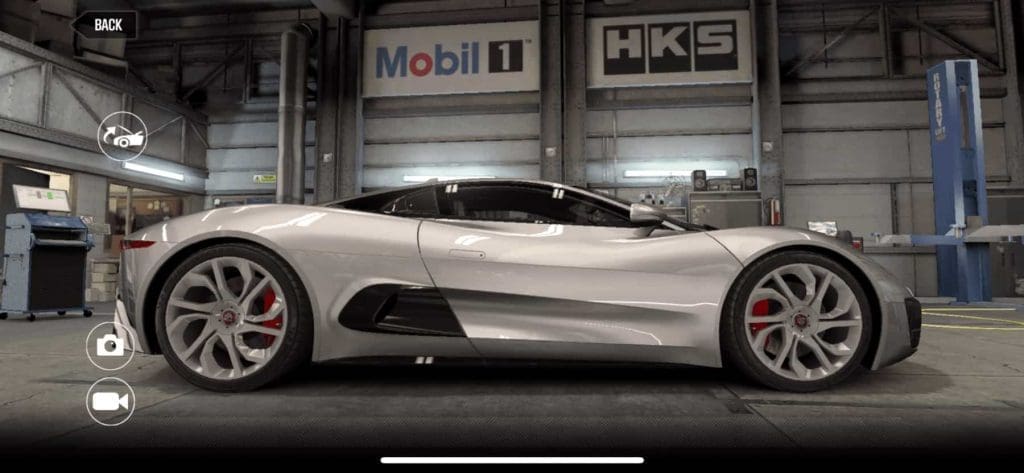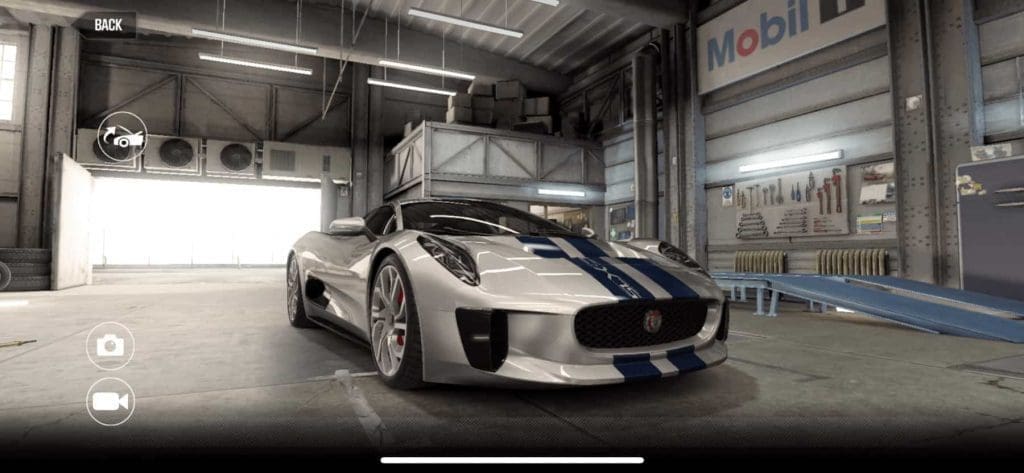The Jaguar C-X75 is the CSR2 Milestone Car of Season 43. The five yellow star Jaguar is not one of the faster cars in Tier 5.
Table of Contents
Jaguar C-X75 Specifications
The real Jaguar C-X75
In the pantheon of concept cars that have left an indelible mark on the automotive world, the Jaguar C-X75 stands out as a beacon of innovation, design, and unfulfilled potential. Born from a desire to celebrate Jaguar’s 75th anniversary, the C-X75 was unveiled in 2010 as a glimpse into the future of sports cars, blending cutting-edge technology with a design that was both breathtakingly beautiful and aerodynamically efficient. This article explores the journey of the C-X75, from its conceptualization to its place in automotive lore as one of the most remarkable “what could have been” stories in recent memory.
Conceptual Genesis
The Jaguar C-X75 was conceived as a testament to Jaguar’s commitment to innovation and performance. Unveiled at the 2010 Paris Motor Show, it was a car that aimed to redefine what was possible in terms of design, power, and environmental efficiency. The project was ambitious, envisioning a hybrid-electric powertrain that would push the boundaries of speed while maintaining a minimal carbon footprint.
Design Mastery
Designed by Ian Callum, Jaguar’s design director at the time, the C-X75’s exterior was a masterclass in blending form with function. The car’s body was sculpted to cut through the air with minimal resistance, featuring active aerodynamics that could adjust to optimize performance or efficiency as needed. Its design was not just about aesthetics; every curve and line was engineered to enhance the car’s aerodynamic profile, making it as swift as it was stunning.
Inside, the C-X75 was equally impressive, with a cockpit that fused luxury with the latest in technology. Materials were chosen not only for their beauty but for their lightweight and sustainable qualities. The interior design emphasized the car’s futuristic vision, incorporating digital displays and controls that provided both driver and passenger with an interface that was intuitive and visually captivating.
A Powertrain Ahead of Its Time
The heart of the C-X75’s innovation lay in its proposed powertrain. Originally, it was to be powered by four electric motors, one at each wheel, providing all-wheel drive and a combined output of 778 horsepower. The electric motors were to be fed by batteries recharged by two micro gas turbines, a revolutionary idea that would have offered an unprecedented combination of power and efficiency. This setup promised a 0-100 km/h (0-62 mph) time of just 3.4 seconds and a top speed of 330 km/h (205 mph), alongside a purely electric range of 110 km (68 miles).
Evolution and Cancellation
Despite the initial plan, the C-X75’s development saw a shift towards a more conventional, yet still groundbreaking, hybrid powertrain. A 1.6-liter turbocharged and supercharged four-cylinder engine paired with two electric motors was developed, aiming for a similar performance level but with greater feasibility for production. However, in 2012, amidst a challenging global economic climate, Jaguar announced the cancellation of the C-X75’s production. Only five prototypes were built, leaving the automotive world to wonder what might have been.
Legacy and Influence
Though it never reached production, the Jaguar C-X75’s impact is undeniable. It served as a rolling laboratory for Jaguar, influencing the design and technology of future models. Elements of its design language can be seen in subsequent Jaguar models, and its approach to hybrid technology previewed the automotive industry’s shift towards electrification.
Moreover, the C-X75 found a different kind of immortality on the silver screen, starring in the James Bond film “Spectre,” where it was featured in a high-speed chase through the streets of Rome. This appearance cemented its status as a cultural icon, a symbol of what the future of sports cars could hold.
Conclusion
The Jaguar C-X75 represents a fascinating chapter in the story of automotive development. It was a bold vision of the future that, despite its ultimate cancellation, showcased the heights that automotive design and engineering could reach. As a bridge between the present and the future, the C-X75 stands as a testament to Jaguar’s legacy of innovation and elegance. Its story is a reminder of the relentless pursuit of excellence and the endless possibilities that lie on the road ahead.
More about the C-X75
The CSR2 Jaguar C-X75
The 5 yellow star Jaguar can fit 128 Fusion parts. So far nothing special. The C-X75 should run 7.989s. To sum up, the Jaguar is not one of the faster cars in Tier 5.
Jaguar C-X75 tune and shift pattern
| Jaguar C-X75 | |
|---|---|
| Tier | 5 |
| NOS | 521 / 5.6 |
| Transmission | 2.96 |
| Tires | 0 / 100 |
| Wining shift pattern | Perfect start, 30mph 2nd, 9.000rpm 3rd and NOS, rest deep good or early perfect shifts |
| Time | 7.937 |
| Manual start |


